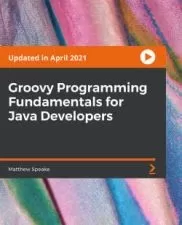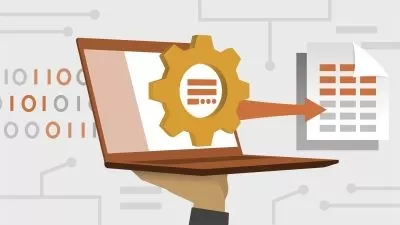01.01-master hibernate and jpa with spring boot.mp4
02:53
01.02-master hibernate and jpa with spring boot-course overview.mp4
03:04
01.03-master hibernate and jpa with spring boot-git repository.mp4
02:30
01.04-master hibernate and jpa with spring boot-installing basic tools.mp4
01:33
01.05-quick introduction to jpa.mp4
07:32
02.01-introduction to spring boot in 10 steps.mp4
01:33
02.02-step 1 introduction to spring boot-goals and important features.mp4
06:11
02.03-step 2 developing spring applications before spring boot.mp4
03:46
02.04-step 3 using spring initializr to create a spring boot application.mp4
04:48
02.05-step 4 creating a simple rest controller.mp4
05:03
02.06-step 5 what is spring boot auto configuration.mp4
09:07
02.07-step 6 spring boot versus spring versus spring mvc.mp4
05:55
02.08-step 7 spring boot starter projects-starter web and starter jpa.mp4
07:39
02.09-step 8 overview of different spring boot starter projects.mp4
04:01
02.10-step 9 spring boot actuator.mp4
08:48
02.11-step 10 spring boot developer tools.mp4
04:12
03.01-introduction to journey from jdbc to jpa.mp4
01:30
03.02-step 01-setting up a project with jdbc jpa h2 and web dependencies.mp4
05:32
03.03-step 02-launching up h2 console.mp4
05:01
03.04-step 03-creating a database table in h2.mp4
03:54
03.05-step 04-populate data into person table.mp4
05:21
03.06-step 05-implement findall persons spring jdbc query method.mp4
06:15
03.07-step 06-execute the findall method using commandlinerunner.mp4
05:45
03.08-step 07-a quick review-jdbc versus spring jdbc.mp4
02:41
03.09-step 08-whats in the background understanding spring boot autoconfiguration.mp4
05:06
03.10-step 09-implementing findbyid spring jdbc query method.mp4
03:48
03.11-step 10-implementing deletebyid spring jdbc update method.mp4
03:08
03.12-step 11-implementing insert and update spring jdbc update methods.mp4
08:39
03.13-step 12-creating a custom spring jdbc rowmapper.mp4
04:58
03.14-step 13-quick introduction to jpa.mp4
05:54
03.15-step 14-defining person entity.mp4
04:03
03.16-step 15-implementing findbyid jpa repository method.mp4
08:06
03.17-step 16-implementing insert and update jpa repository methods.mp4
03:51
03.18-step 17-implementing deletebyid jpa repository method.mp4
02:10
03.19-step 18-implementing findall using jpql named query.mp4
04:03
04.01-introduction to junit in 5 steps.mp4
01:08
04.02-step 1 what is junit and unit testing.mp4
03:55
04.03-step 2 first junit project and green bar.mp4
04:44
04.04-step 3 first code and first unit test.mp4
05:07
04.05-step 4 other assert methods.mp4
03:46
04.06-step 5 important annotations.mp4
05:08
05.01-introduction to jpa and hibernate in depth.mp4
01:43
05.02-step 01-create a jpa project with h2 and spring boot.mp4
04:43
05.03-step 02-create jpa entity course.mp4
04:04
05.04-step 03-create findbyid using jpa entity manager.mp4
08:24
05.05-step 04-configuring application properties to enable h2 console and logging.mp4
07:08
05.06-step 05-writing unit test for the findbyid method.mp4
10:46
05.07-step 06-writing a deletebyid method to delete an entity.mp4
05:41
05.08-step 07-writing unit test for the deletebyid method.mp4
04:33
05.09-step 08-writing a save method to update and insert an entity.mp4
03:23
05.10-step 09-writing unit test for the save method.mp4
05:51
05.11-step 10-quick review and debugging tips.mp4
07:16
05.12-step 11-playing with entity manager.mp4
07:16
05.13-step 12-entity manager methods-clear and detach.mp4
05:32
05.14-step 13-entity manager methods-refresh.mp4
06:31
05.15-step 14-a quick review of entity manager.mp4
02:10
05.16-step 15-jpql-basics.mp4
07:57
05.17-step 16-jpa and hibernate annotations-attable.mp4
04:35
05.18-step 17-jpa and hibernate annotations-atcolumn.mp4
05:48
05.19-step 18-jpa and hibernate annotations-atupdatetimestamp and atcreationtimestamp.mp4
07:08
05.20-step 19-jpa and hibernate annotations-atnamedquery and atnamedqueries.mp4
04:21
05.21-step 20-native queries-basics.mp4
08:15
06.01-step 21-entities and relationships-an overview.mp4
06:21
06.02-step 22-defining entities-student passport and review.mp4
09:30
06.03-step 23-introduction to one to one relationship.mp4
07:22
06.04-step 24-onetoone mapping-insert student with passport.mp4
08:46
06.05-step 25-onetoone mapping-retrieving student with passport and eager fetch.mp4
04:33
06.06-step 26-onetoone mapping-lazy fetch.mp4
04:50
06.07-step 27-transaction entity manager and persistence context.mp4
10:12
06.08-step 28-onetoone mapping-bidirectional relationship-part 1.mp4
06:35
06.09-step 29-onetoone mapping-bidirectional relationship-part 2.mp4
03:52
07.01-faq 1-when does hibernate send updates to the database.mp4
06:13
07.02-faq 2-when do we need attransactional in a unit test.mp4
03:10
07.03-faq 3-do read only methods need a transaction.mp4
04:58
07.04-faq 4-why do we use atdirtiescontext in a unit test.mp4
03:46
08.01-step 30-manytoone mapping-designing the database.mp4
04:34
08.02-step 30-part 2-manytoone mapping-implementing the mapping.mp4
06:52
08.03-step 31-manytoone mapping-retrieving and inserting reviews for course.mp4
08:09
08.04-step 32-manytoone mapping-generalizing insert reviews.mp4
06:09
08.05-step 33-manytoone mapping-wrapping up.mp4
09:28
08.06-step 34-manytomany mapping-table design.mp4
02:59
08.07-step 35-manytomany mapping-adding annotations on entities.mp4
04:44
08.08-step 36-manytomany mapping-fixing two join tables problem.mp4
03:27
08.09-step 37-manytomany mapping-customizing the join table.mp4
05:02
08.10-step 38-manytomany mapping-insert data and write join query.mp4
04:41
08.11-step 39-manytomany mapping-retrieve data using jpa relationships.mp4
07:11
08.12-step 40-manytomany mapping-insert student and course.mp4
08:38
08.13-step 41-relationships between jpa entities-a summary.mp4
03:58
09.01-step 42-introduction to inheritance hierarchies and mappings.mp4
02:34
09.02-step 43-jpa inheritance hierarchies and mappings-setting up entities.mp4
04:13
09.03-step 44-jpa inheritance hierarchies and mappings-setting up a repository.mp4
05:12
09.04-step 45-jpa inheritance hierarchies and mappings-single table.mp4
05:31
09.05-step 46-jpa inheritance hierarchies and mappings-table per class.mp4
03:35
09.06-step 47-jpa inheritance hierarchies and mappings-joined.mp4
03:53
09.07-step 48-jpa inheritance hierarchies and mappings-mapped super class.mp4
05:14
09.08-step 49-jpa inheritance hierarchies and mappings-how to choose.mp4
04:37
10.01-step 50-jpql-courses without students.mp4
05:54
10.02-step 51-jpql-courses with 2 students and order by.mp4
03:57
10.03-step 52-jpql-courses like 100 steps.mp4
04:22
10.04-step 53-jpql-using joins.mp4
10:21
11.01-step 54-criteria query-retrieving all courses.mp4
09:03
11.02-step 55-criteria query-courses like 100 steps.mp4
03:27
11.03-step 56-criteria query-courses without students.mp4
02:16
11.04-step 57-criteria query-using joins.mp4
03:48
12.01-step 58-introduction to transaction management.mp4
04:43
12.02-step 59-transaction management-acid properties.mp4
05:49
12.03-step 60-understanding dirty phanthom and non-repeatable reads.mp4
09:25
12.04-step 61-understand 4 isolation levels.mp4
05:48
12.05-step 62-choosing between isolation levels.mp4
04:03
12.06-step 63-implementing transaction management-3 things to decide.mp4
04:38
13.01-step 64-introduction to spring data jpa.mp4
04:28
13.02-step 65-testing the spring data jpa repository with findbyid..mp4
04:13
13.03-step 66-spring data jpa repository-crud methods.mp4
05:30
13.04-step 67-sorting using spring data jpa repository.mp4
02:53
13.05-step 68-pagination using spring data jpa repository.mp4
06:17
13.06-step 69-custom queries using spring data jpa repository.mp4
07:31
13.07-step 70-spring data rest.mp4
05:14
14.01-step 71-introduction to caching and the various levels of caching in hibernate and jpa.mp4
07:16
14.02-step 72-hibernate and jpa caching-first-level cache.mp4
06:24
14.03-step 73-hibernate and jpa caching-basics of second-level cache with ehcache.mp4
07:32
14.04-step 74-hibernate and jpa caching-second-level cache part 2.mp4
09:26
15.01-step 75-hibernate tips-hibernate soft deletes-atsqldelete and atwhere.mp4
09:36
15.02-step 76-hibernate soft deletes-part 2.mp4
06:17
15.03-step 77-jpa entity life cycle methods.mp4
02:37
15.04-step 78-using embedded and embeddable with jpa.mp4
06:31
15.05-step 79-using enums with jpa.mp4
06:24
15.06-step 80-jpa tip-be cautious with tostring method implementations.mp4
02:31
15.07-step 81-jpa tip-when do you use jpa.mp4
02:09
16.01-step 82-performance tuning-measure before tuning.mp4
01:56
16.02-step 83-performance tuning-indexes.mp4
01:44
16.03-step 84-performance tuning-use appropriate caching.mp4
02:56
16.04-step 85-performance tuning-eager versus lazy fetch.mp4
02:02
16.05-step 86-performance tuning-avoid nand1 problems.mp4
08:51
17.01-faq 5-how to connect to a different database with spring boot.mp4
04:06
17.02-faq 6-approach to design great applications with jpa.mp4
02:26
17.03-faq 7-good practices for developing jpa applications.mp4
04:39
18.01-congratulations.mp4
01:16
19.01-introduction to spring framework in 10 steps.mp4
01:10
19.02-step 1-setting up a spring project using htttpstart.spring.io.mp4
04:49
19.03-step 2-understanding tight coupling using the binary search algorithm example.mp4
08:27
19.04-step 3-making the binary search algorithm example loosely coupled.mp4
05:22
19.05-step 4-using spring to manage dependencies-atcomponent atautowired.mp4
11:31
19.06-step 5-what is happening in the background.mp4
06:28
19.07-step 6-dynamic auto wiring and troubleshooting-atprimary.mp4
04:47
19.08-step 7-constructor and setter injection.mp4
04:56
19.09-step 8-spring modules.mp4
05:05
19.10-step 9-spring projects.mp4
04:46
19.11-step 10-why is spring popular.mp4
04:15
9781788995320 Code.zip















